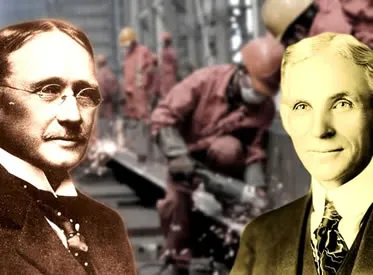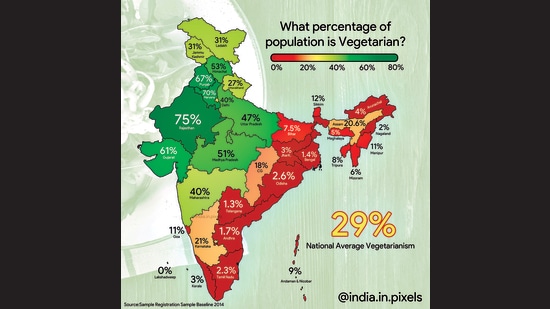(Originally posted on May 5, 2018 on the Drishti blog)
The biggest problem facing modern manufacturing is that humans are effectively invisible to analytics.
This problem is all the more significant when you realize that even after decades of advancement in robotics and automation, up to 90% of manufacturing tasks are still performed by humans. 340 million of them, according to Goldman Sachs Research, which measured global manufacturing employment.
In the age of the Industrial IoT, the dataset from human activities is so dwarfed by the dataset from instrumented machines as to be effectively non-existent.
This data imbalance creates two massive second-order effects:
- It leads manufacturers to overinvest in the 10% of manufacturing tasks that are easily quantified (robots, automation, IIoT) or to optimize for costs (offshoring, layoffs)
- It leads factory workers to fear for their future and to resent new technology, with troubling economic, cultural, and political implications
This is a bleak reality.
I believe that Drishti offers an alternative path.
But, before I describe the future, I first need to go back more than 100 years, to the dawn of the age of mass production.
Frederick Taylor’s immortal time study
In 1911, Frederick Winslow Taylor published The Principles of Scientific Management. This monograph, as anyone who has studied industrial history knows, is supplanted perhaps only by the Toyota Production Method in its impact on modern manufacturing.
In this book, Taylor described in detail how one performs a time study. Using “a stop-watch and a properly ruled notebook,” the observer merely follows five simple steps:
First. Find, say, 10 or 15 different men…who are especially skillful in doing the particular work to be analyzed.
Second. Study the exact series of elementary operations or motions which each of these men uses in doing the work which is being investigated, as well as the implements each man uses.
Third. Study with a stop-watch the time required to make each of these elementary movements and then select the quickest way of doing each element of the work.
Fourth. Eliminate all false movements, slow movements, and useless movements.
Fifth. After doing away with all unnecessary movements, collect into one series the quickest and best movements as well as the best implements.
A lot has changed since 1911, including (thankfully) Taylor’s anachronistic gender conventions. But time studies have persisted.
I’ve been walking manufacturing floors for 30 years. Everywhere I go, I still find engineers conducting time studies in accordance with Taylor’s principles. The tools have evolved with time—they use iPhones instead of stopwatches; they transcribe to Excel instead of paper—but the fundamental techniques remain the same.
Which creates perhaps the single biggest problem in manufacturing today.
The time study distortion
Taylor had it exactly right in one regard: the data from a time study should help you eliminate waste and optimize processes.
The problems arise when you can’t trust the data.
The first problem is that time studies result in an incomplete dataset. Time studies are manual and time-consuming. If you get 20 samples per station, you get a pat on the back. But 20 samples lack the statistical significance to accurately inform decisions on a system that runs in the thousands of units.
The second problem is the dataset is unreliable. Werner Heisenberg, the German theoretical physicist, demonstrated that the very act of observation can perturb an observed system. That’s true for quantum physics, and it’s true for the manufacturing floor. I can tell you with full certainty that if my superior was standing behind me with a stopwatch, I would work as diligently as I could to impress her, but the activity she sampled wouldn’t truly represent my day-to-day performance.
Or, if I were less scrupulous, I might deliberately work slow. After all, the time she captures would likely be my benchmark for future performance—why not pad it out a little so I look good when my review comes around?
Compounding this reliability issue is a consistency issue: the definition of when a task begins and ends is up to the observer’s judgment. Two people conducting a time study on the same task will come away with differing results.
Management abhors a data vacuum
Think about all the decisions your factory takes based on human process data:
- Daily staffing decisions to meet output demand
- Measuring the results of lean process optimization (line balancing, kaizen)
- Capacity planning for hiring, expansion and more
- And many others
Now, think about the cascading impact of data flaws on all those decisions.
Scary. No wonder factories are so focused on automation and offshoring: unlike human activities, at least those numbers can be measured reliably.
Solving a 100-year-old problem
But what if you could measure human activities at scale?
How would this change your approach to optimizing your processes? To balancing your lines?
How would this change the ROI calculations that tend to favor automation over manual labor?
How would this change the investment you make in your human workforce?
Drishti’s hypothesis is that for 100 years, manufacturers have been driven to automation, to offshoring, to robots, and to other productivity and quality practices because they’ve assumed that humans couldn’t perform any better. Underpinning conventional industry decisions has been this assumption that humans are at peak productivity, and should only be engineered out of the process.
Drishti believes the core problem is more fundamental: the industry simply couldn’t measure human activities. So of course they couldn’t optimize.
A new dataset for factories and people
Drishti applies computer vision, machine learning and AI to—for the first time since Frederick Taylor—create a meaningful dataset from human activities.
Manufacturers use Drishti for true digital transformation: not just to optimize stations and lines, but to improve all the functions that rely on time and motion data from human activities.
At the same time—and, for me, perhaps even more importantly—is the role Drishti plays in the life of the operator. Our company’s mission is to “extend human potential in an increasingly automated world.” This is the reason we get up in the morning: to help workers add greater value to every process they perform.
Our hope—our expectation—is that Drishti will offer breakthrough productivity and quality improvements. Enough to change the ROI calculus of an existing workforce and lead to a data-driven (and mutually beneficial) rebalancing of the mix among human labor, automation and outsourcing.
Thank you, Frederick Taylor, for driving global manufacturing through the last 100 years. But now, on behalf of the 340 million people in manufacturing worldwide, it’s time to retire your stopwatch.










